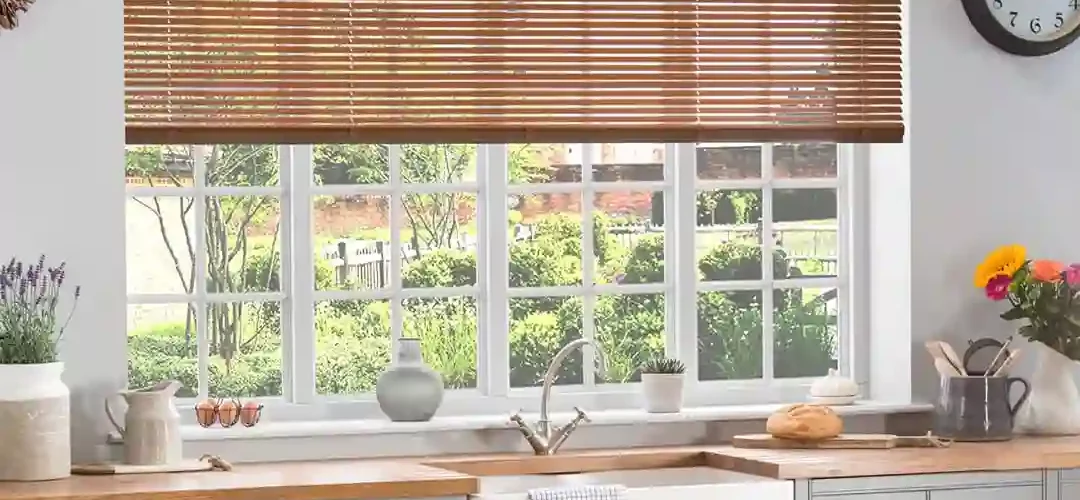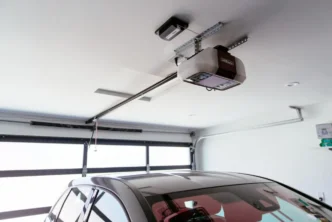Are you searching for a replacement for conventional curtains? The inside blind is the perfect way to decorate your windows and shield you from the sun and nosy onlookers.
There are several versions that mix decoration and utility, just like the shutters that can elegantly dress your windows. Find the best types of blinds for your space based on the decor.
Invest in the Venetian blind for your windows
The Venetian blind is made of thin, horizontal slats that tilt. The slats on some variants can be as wide as 5 cm. The manual or motorized system allows for twofold adjustment and is very simple to use.
On the one hand, in order to precisely dosage the brightness, its blades pivot horizontally between 0 and 180 degrees.
The inside blind, however, may be raised or lowered to the ideal height thanks to its self-locking brake. In other words, the ability to control the temperature of the house is made possible by the perfect modulation of the light.
Additionally, the Venetian blinds ensures that you are completely shielded from the sun and prying eyes.
This style of blind, which is particularly popular in Europe, comes in a variety of hues and materials. Venetian blinds are available in wood, aluminum, PVC, and vinyl to match any decor in the house.
They work well with both patio doors and conventional windows, especially small ones. Venetian blinds continue to be quite affordable, even for those on a tight budget, with models starting at just 5 €.
The Californian blind, or vertical strip blind, is perfect for original windows
The vertical blind, commonly known as the “Californian blind,” is impossible to miss. The American series frequently uses models with broad vertical bands that move over a horizontal rail.
This style of awning is special since it may be positioned on inclined planes and fitted underneath slopes. It will work well in a veranda as well.
Additionally, there are two navigation systems available for this kind of blindness.
On the left, right, or on each side of the bay window, the broad vertical bars fold horizontally.
To control the amount of light coming in and manage the shadowed areas, they can also pivot around their axis. These systems can be manually or mechanically operated.
The vertical blind has various benefits even though its design is not the most cutting-edge.
First, it serves as a shield against the sun’s beams, enabling partial or complete occultation. The blades’ orientation enables you to look without drawing attention to yourself.
Depending on the material, the Californian blind also offers unbeatable resistance to time, the light, heat, and “violence” (cat, child).
Additionally, picking a model with reinforced textiles will suffice to prevent it from moisture and early fading.
Last but not least, this style of blind, which comes in a variety of materials (fabric, aluminum, wood, and PVC), is appropriate for big glass surfaces.
It works well with both classic French windows and more unique joinery (triangle, trapezium, etc.). You may find them for as little as 135 euros.
A staple for small windows is the roman blind
The horizontal rods that make up this interior blind shop near me are spaced evenly throughout its height.
The cloth panels are defined by the rods and fold or unfurl one at a time. The manual system has a cord or chain that makes operating it very simple.
Additionally, the mechanism is motorized. Its fabric is similar to that of a boat’s sails. Nothing could be easier to wash it than to simply place it in the washing machine.
Do you desire an affordable, practical, and easy-to-maintain model?
The best option appears to be the boat blind. This somewhat flimsy blind is meant to cover small apertures, particularly roof windows.
Additionally, a bedroom is a better place to install a Roman blind than a kitchen because the projections in the latter are more likely to quickly dirty it.
We get a conflicting picture of how well sunscreen works in blocking the sun.
On the other hand, if the internal Roman blind reduces glare, it allows light to be filtered.
Therefore, if you want to be sheltered from the heat while looking for gentle, muted light, this is the perfect window item for you. You can find accommodations for between 150 and 200 euros.
The decorative asset that are Japanese panels
The Japanese panels are the ideal choice whether you want to seal off a storage area, divide a room in two, or create a Zen-inspired design.
Similar to stiff curtains, these interior blinds also have a modern and elegant look. Without being on the same track, the panels move one behind the other.
This blind is typically used to draw attention to the bay windows in the living room. However, it can also be utilized to define areas within a single room.
There are many models available in both traditional and cutting-edge cloth.
The Japanese panels either filter light more or less effectively, depending on the finish that is used. And the cost (between 220 and 300 €) is also based on this factor.
The best window treatment is a roller blind
This popular design has an automated roller and a chain that the blind will wrap either inwards or outwards.
The chain (or cord) enables manual adjustment of the blind’s height. The roller blind features a brake as well. The awning can be reduced and blocked with this component in any position.
This model is present on the walls, the ceilings, and in every room of the house. To filter and embellish your home, just a basic fabric is required. Technical clothing provides thermal insulation while concealing.
In any case, the roller blind is still a simple design with lots of benefits. It’s easy to use and install, and it comes in a variety of colors and materials (fabric, PVC and wood).
Additionally appropriate for a variety of functions is this blind (windows, French windows, roof window).
Whatever you decide, the costs are still affordable, ranging from 60 to 100 euros, with wood continuing to be the most expensive option.





